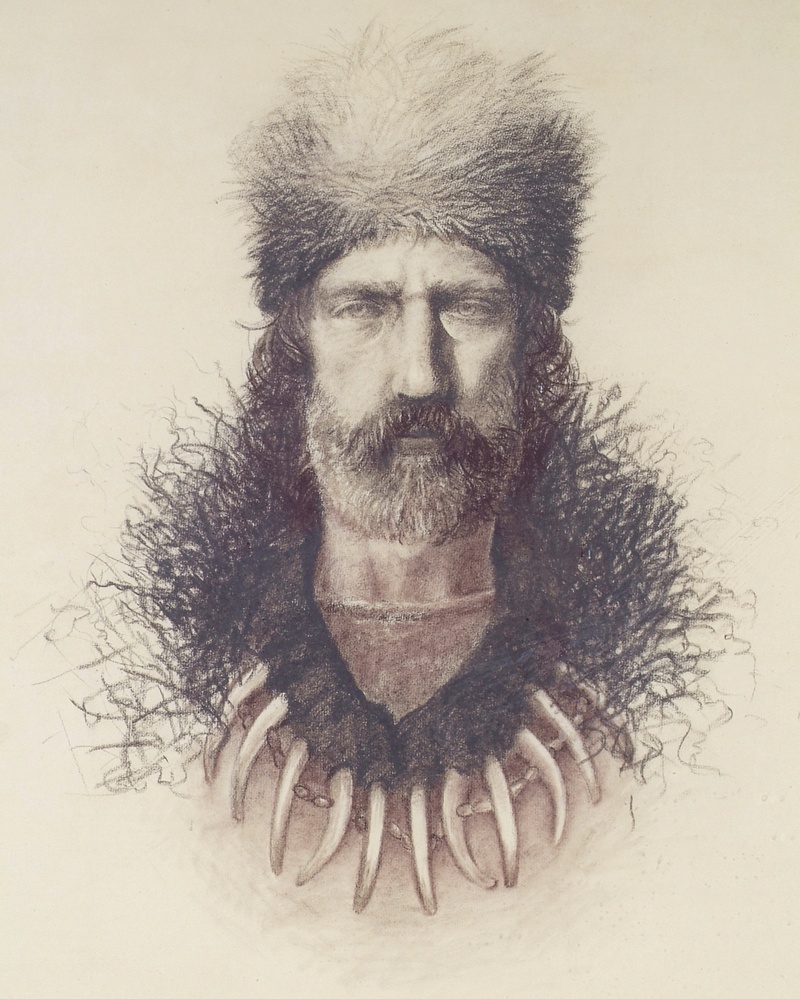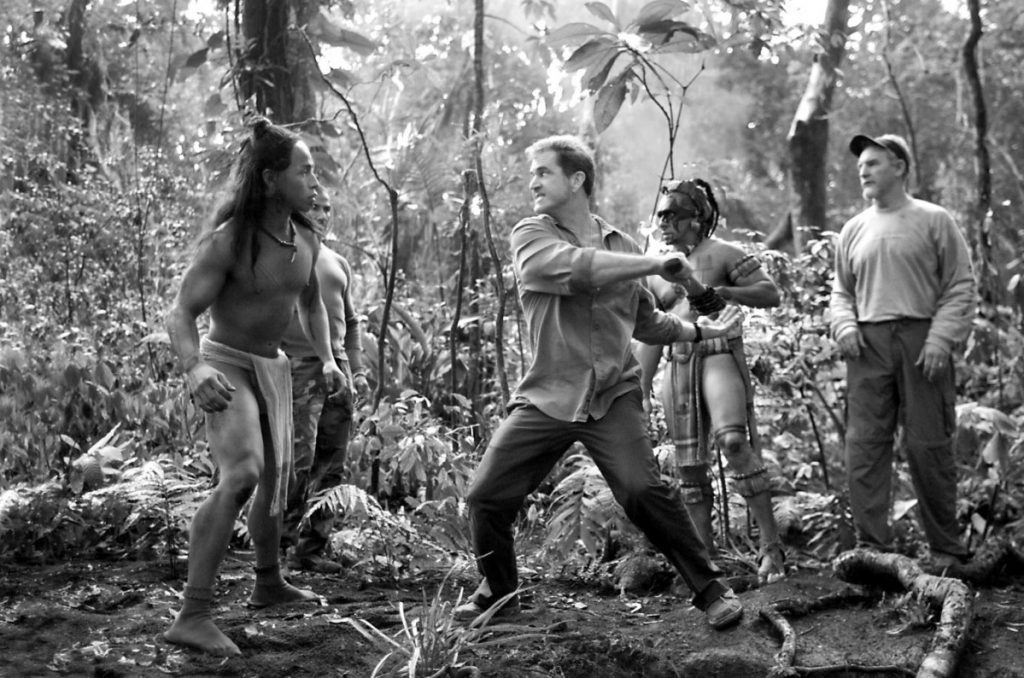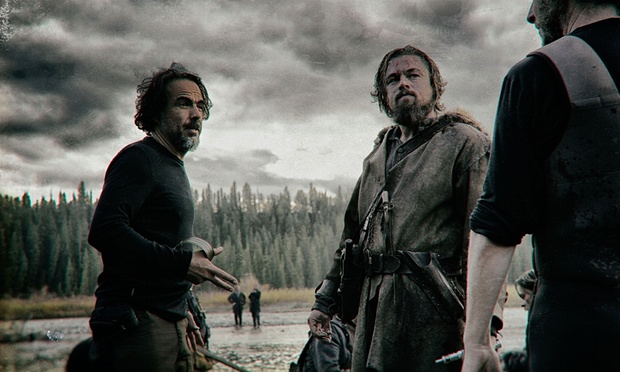In this quick article, Andrew SPOILS the ending of The Revenant and tells three time Oscar winning director Alejandro González Iñárritu how to write and direct his 12-time Oscar nominated film about survival.
The Revenant is a film designed to tell the grand tale of survival of Hugh Glass, a man who was left for dead after being mauled by a bear, by his crew – namely, Tom Hardy’s John Fitzgerald. On the surface, Fitzgerald is your run of the mill villain of the piece – he’s got a nasty scar from a previous attack on his life, he cares about himself and his work and puts the money he could earn from the pelts he’s collected above Glass’ life. Yet, the creative truth that Inarritu has set up within his film doesn’t allow the character of Fitzgerald to be any more than a self-absorbed individual.
For me though, Fitzgerald is the most sympathetic character within the story that The Revenant presents. Now, Inarritu doesn’t present him as sympathetic, but on contemplation after seeing the film, I realise that there was an opportunity to tell a much more immersive, substantial story here than what we get. Take Hugh Glass for example, the desire to add an ‘emotional’ pull by conjuring up a son that didn’t exist and making that the reason for Glass’ revenge lacks all necessary emotion to make it a worthwhile revenge story to embark on. Given Glass is the character we spend the most time with, it makes little sense to include these elements over telling his real story. (I’m fully aware that the entire story of Glass’ survival is not known, but what is known is that he didn’t have a son.)
Let’s peruse the ever reliable wikipedia page for Hugh Glass and its retelling of his tale of survival:
Near the forks of the Grand River, in present-day Perkins County, South Dakota, while scouting for game for the expedition larder, Glass surprised and disturbed a grizzly bearwith two cubs. The bear charged, picked him up, bit and lacerated his flesh, severely wounding him, and body slammed him to the ground. Glass managed to kill the bear with help from his trapping partners, Thomas Fitzpatrick and Jim Bridger, but was left badly mauled and unconscious. General Ashley, who was also with them, became convinced he would not survive his injuries.
Ashley asked for two volunteers to stay with Glass until he died, and then bury him. Young Jim Bridger, then 19 years old, and John S. Fitzgerald, then 23 years old, stepped forward, and as the rest of the party moved on, began digging his grave. Later, claiming that they were interrupted by attacking Arikara Native Americans, the pair grabbed the rifle, knife, and other equipment belonging to Glass, and took flight. Bridger and Fitzgerald later caught up with the party and incorrectly reported to Ashley that Glass had died. There is a debate whether Bridger was one of the men who abandoned Glass.
Despite his injuries, Glass regained consciousness, but found himself abandoned, without weapons or equipment. He had festering wounds, a broken leg, and deep cuts on his back that exposed his bare ribs. Glass lay mutilated and alone, more than 200 miles (320 km) from the nearest American settlement, at Fort Kiowa, on the Missouri River. Glass set the bone of his own leg, wrapped himself in the bear hide his companions had placed over him as a shroud, and began crawling back to Fort Kiowa. To prevent gangrene, Glass laid his wounded back on a rotting log filled with maggots and let the maggots eat the dead, infected flesh, from the rest of his healthy body.
Glass crawled overland south toward the Cheyenne River, using Thunder Butte as a navigational tool, where he fashioned a crude raft and floated downstream to Fort Kiowa. The journey took him six weeks. He survived mostly on wild berries and roots; on one occasion he was able to drive two wolves from a downed bison calf, and feast on the raw meat. Glass was aided by friendly Native Americans who sewed a bear hide to his back to cover the exposed wounds and provided him with food and weapons.
Wow. That’s pretty intense and exciting. For starters – the film presents Glass’ bear attack as him being surprised by the bears, rather than him surprising a family of bears. Isn’t he supposed to be a lead tracker? Even though the film does include some of the more gruesome images of Glass’ recovery, the ‘setting of his broken leg’ and the ‘laying on a log filled with maggots’ is (for me at least) more thematically interesting than what is presented in the film.
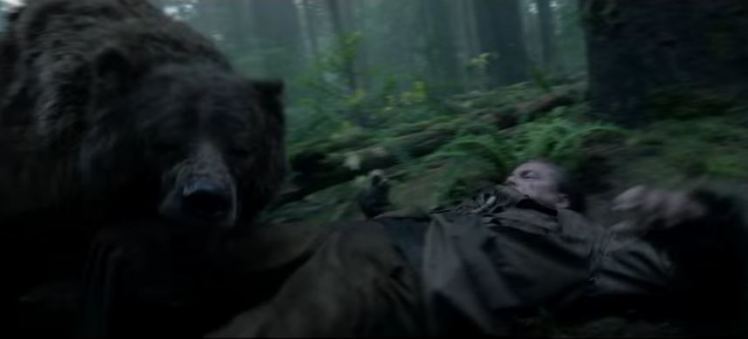

Let’s get back to Hardy’s Fitzgerald though as that is the crux of my problem with The Revenant. As mentioned, Glass’ story is an interesting one for sure, there’s simply no denying that, but is it interesting enough to make him the main character of the film? Personally, I don’t think so. For me, Hardy’s Fitzgerald is a more compelling character and a character that I would have loved to have seen be the focus of the film. If you turn the film around and focus mostly on his character, and his path of conflict after leaving a crew member to die, then it suddenly becomes a more interesting and troubling film.
Fitzgerald is a man who’s job is his whole life. After an attack by Arikara warriors, the Fitzgerald team lose their whole collection of pelts. Soon after, Glass is attacked and it’s up to Fitzgerald and fellow trapper, Bridger, to watch over him until he passes and give him a proper burial. As this is the late 1800’s, surgery and medicine was an exceptionally crude tool to use when someone was injured. Thinking logically and realistically, Fitzgerald says that the kindest thing would be to put Glass out of his misery – and given the extent of his injuries, that’s not a stupid thing to say.
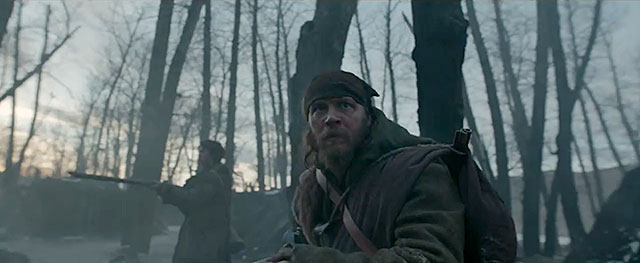

In fact, I was confused why Fitzgerald didn’t just kill Glass himself. After all, up to this point, the film has shown him as a blood thirsty individual, and even possibly suggests that he is a person who’s involved with the kidnapping of a Sioux warrior’s daughter. Yet, here is why I feel that this could have been a better emotional throughline for the film to follow. As mentioned, Fitzgerald’s job is his whole life, he has nothing else, not even the camaraderie of his fellow men. Yet he does have an emotional core and that could have been enough for him to not be able to pull the trigger and take Glass’ life. Wouldn’t it be more compelling that a man who is conflicted by his livelihood would struggle to take the life of a man who he works with?
Because of Glass’ imaginary wife and son, it would not be a stretch to see Iñárritu conjur up elements that may not have been part of the real Fitzgerald. If the film instead focused on the internal struggle that Fitzgerald had as he leaves Glass in the wilderness to die a slow death, only to find that Glass has survived and managed to succeed in returning to camp to conquer him, then that (for me at least) would have been a more compelling and heart breaking story. As the wikipedia entry suggests, Glass was returning to camp to come and kill Fitzgerald, to enact his revenge. However, because of the heavy penalty for taking a soldiers life, Glass spared Fitzgerald.
The film tries to throw in this grand metaphor about God and leaving death to God’s hands, however this just is not explored enough to be a compelling theme within the film. Again, me, humble person who writes on a film review website in Perth, Western Australia, is telling three time Oscar winner Alejandro González Iñárritu how to write and direct his 12 time Oscar nominated film. I feel that Iñárritu is not a director who can make the survival of one man in the wilderness a compelling thing to watch – it has been done before (of course, more charismatically with Tom Hanks, a volleyball and a tropical island in Cast Away, but also in the exceptionally exciting and terrifying Mel Gibson directed Apocalypto), but it hasn’t (for my money at least) been done competently, nor interestingly, enough here.
To surmise, my ideal version of The Revenant would see the focus shifted from Glass to Fitzgerald. It would be to maintain as much fidelity to the original story as possible by not conjuring up non-existent wives and children and by leaving Fitzgerald alive at the end. Have Fitzgerald become a character who lives a life conflicted of the pain and trauma that he inflicted on a fellow trapper. Have him become someone more three dimensional than a 19th Century Batman villain – for that’s all that Fitzgerald is within this telling of this tale.
Having Glass kill Fitzgerald at the end seems rewarding in a theatrical setting – to see someone enact their revenge can be great; but to see someone not be able to enact their revenge and thus see the person they want dead to have to live with the anguish that they have caused can be even more rewarding than seeing a man die a horrible death.
Have Glass out of the story for the most part, only flashing back when narratively necessary to show his recovery on a log covered in maggots, or having his back stitched by a Native American. Have his journey from a shallow grave to civilisation actually feel like it has taken six weeks, rather than the long weekend that the film displays (to be fair, the film doesn’t actually show Glass’ journey as taking place over three days, it simply feels like it happens all too quickly).
Most of all though, I would at least have a version of The Revenant that is compelling and interesting to watch.

